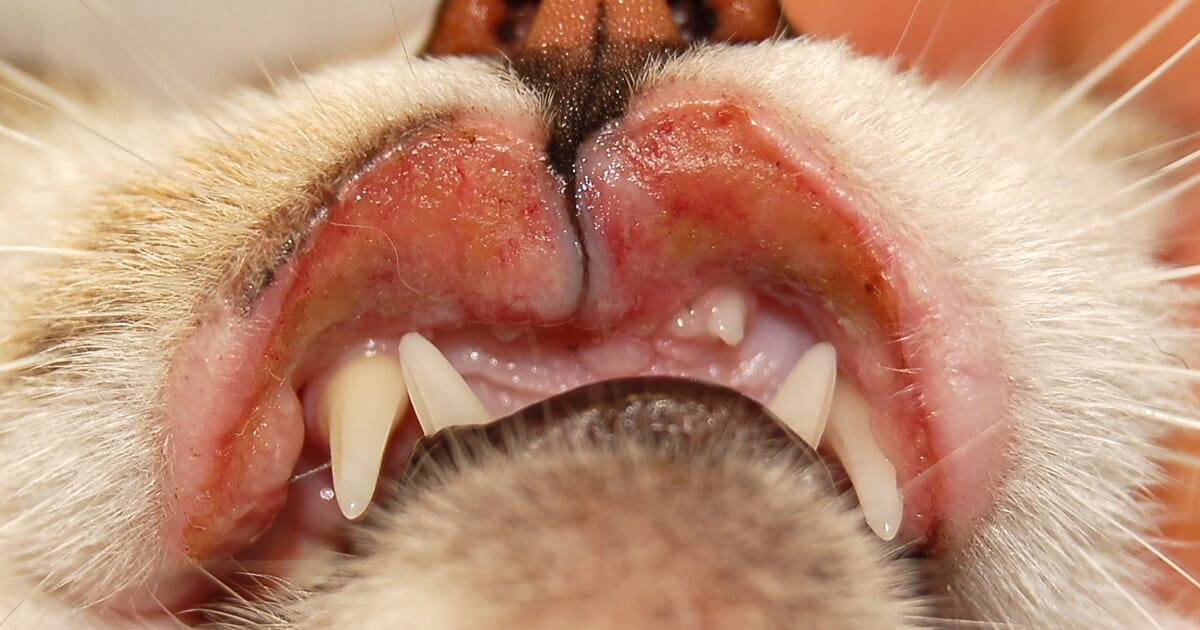
Shortly after becoming infected cats may have a fever and enlargement of the lymph nodes glands. Hull explained to Lucys family that felines with this disease typically have a poor chance of responding well to the immune suppressant medication that could save their life.

Cold agglutinins occur naturally without disease in some cats and they have been associated with primary haemolytic anaemia and with a variety of other diseases including Haemoplasma spp.
Can cats have autoimmune disease. The doctors at the Veterinary Teaching Hospital finally determined the cat was suffering from primary immune-mediated hemolytic anemia. With full transparency Dr. Hull explained to Lucys family that felines with this disease typically have a poor chance of responding well to the immune suppressant medication that could save their life.
Cats that are allowed to roam outdoors male cats and older cats are more likely to become infected. This viral infection attacks the immune system leading to infections of the gums mouth digestive tract urinary tract and skin. Low red and white blood cell counts certain cancers or neurologic disease may also be seen.
Shortly after becoming infected cats may have a fever and enlargement of the lymph nodes glands. However these signs go away and the cat. Among cats this bacterium is most commonly transmitted by the bites of infected cat fleas and it may also be found in the feces of these fleas which can serve as sources of infection if exposed to an open wound in either a cat or a human.
Although these viruses do not spread to humans they affect the cats immune system. This puts your cat at risk of other infections that may be spread to humans. Feed your pet only commercially prepared food and treats.
Animals can get sick from undercooked or raw meat or eggs. Cats can get infections such as toxoplasmosis by eating wild animals. Infected outdoor cats fighting with other cats can transmit the disease through bites and scratches.
Healthy cats over three months of age and vaccinated for FeLV are highly unlikely to contract the virus from another cat. Cats can be infected and show no signs. Loss of appetite and weight loss.
Pale or inflamed gums. When you have an autoimmune disease basically your body is attacking itself. These conditions are notoriously difficult to diagnose.
And they can manifest through a wide variety of symptoms. So getting to the root cause isnt easy and can take a long time. Autoimmune diseases are on the rise in a significant way.
Worldwide up to 700 million people are estimated to be suffering from. Cold agglutinin disease is a rare autoimmune haemolytic disease reported in cats and associated with cold reacting IgM erythrocyte autoantibodies. Cold agglutinins occur naturally without disease in some cats and they have been associated with primary haemolytic anaemia and with a variety of other diseases including Haemoplasma spp.
Your autoimmune disease didnt happen overnight. Sure you may have a genetic predisposition towards autoimmunity. However we now know about epigenetics and that our genes are not static and they can be both turned on and turned off by environmental and lifestyle factors.
As a functional medicine physician I work with my patients to find the root cause of their autoimmunity by. Feline immunodeficiency virus or cat FIV is a retrovirus infection first discovered in cats in the US. The virus is often referred to as cat HIV or cat AIDS because it has a similar effect on.
PF is the most common condition of the pemphigus complex 38 and is the most frequently occurring autoimmune skin condition in dogs cats and horses. The disease usually appears to be idiopathic although it has been associated with drug administration and can develop subsequent to chronic usually allergic skin disease. Autoimmune hemolytic anemia AIHA is an immune system disease in which the body attacks and destroys its own red blood cells.
In cats with AIHA red blood cells are still being manufactured in the bone marrow but once released into the circulation they have a shorter-than-normal life span. The immune system is exceedingly complex and decades of research have illuminated some of the ways it goes awry in autoimmune disease. But for most autoimmune illness including those mentioned above the true cause is unknown.
The most common and quite general theory is that a person with a particular genetic background that makes them prone to immune system misfiring encounters an environmental trigger such as an infection or a toxin and that sets off autoimmune disease. The other two forms of plague septicemic and pneumonic cause more severe disease. Cats infected with plague can infect people through bites scratches coughs or sneezes.
Rabies a fatal neurologic disease in animals and people is caused by a virus. Animals and people are most commonly infected through bites from rabid animals. Infected cats may have a variety of signs.
In stage I there is the acute HIV infection and the immune system is intact. In this stage autoimmune diseases may develop. Stage II describes the quiescent period without overt manifestations of AIDS.
However there is a declining CD4 count indicative of some immunosuppression. Autoimmune diseases are not found. During stage III there is immunosuppression with a low CD4 count and the development of AIDS.
CD8 T cells predominant and diseases. This is an extremely painful disease and cats will often have difficulty eating hypersalivate drool paw at the mouth and show other signs of mouth pain. They may lose weight with the reduced appetite.
Various treatments may be used including initial scaling and cleaning of the teeth follow-up home care antibiotics and anti-inflammatories. The response to therapy is variable and many cats.